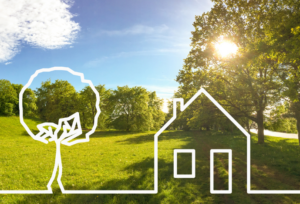 If you’re looking for a newly constructed home, you may come across information related to “green construction” or “resilient” building techniques. Green builders construct homes that are cost-effective to operate, have healthy indoor air quality, and have a minimal impact on environmental resources. In addition to lessening their environmental impact, they actively mitigate the effects of natural hazards, such as wind or flood damage.
If you’re looking for a newly constructed home, you may come across information related to “green construction” or “resilient” building techniques. Green builders construct homes that are cost-effective to operate, have healthy indoor air quality, and have a minimal impact on environmental resources. In addition to lessening their environmental impact, they actively mitigate the effects of natural hazards, such as wind or flood damage.
Recently, the National Association of Home Builders (NAHB) conducted a survey of builders and remodelers asking them about the most widely used green practices and features and how they mitigate the effects of natural hazards. The most common natural hazards can be divided into three categories: wind, flood, and fire. Here is a closer look at these categories.
Wind. Whether from a hurricane, tornado or other storm, wind can have serious effects on your home. Nearly half of builders (46%) incorporated a roof system built for high-wind events. Builders and remodelers also reported the use of hurricane ties and using hurricane clips to protect the roof of a home.
Flood Hazards. Water in your home can take a toll on your home and finances. According to the Federal Emergency Management Agency (FEMA), an inch of floodwater can cause roughly $25,000 of damage to your home. The top practice used by nearly a third (32%) of builders and remodelers to mitigate water damage was using a secondary water barrier on the roof. Followed closely was raising the lowest floor of the home more than one foot above flood levels (31%) and using water-resistant materials for walls (30%).
Fire Hazards. Flames, heat, smoke and water can severely structurally damage your home. Builders and remodelers incorporate fire-resistant materials for exterior walls and can install a roof with fire-resistant features. Surprisingly, your yard can help mitigate fire damage. Builders and remodelers report creating a “defensible barrier” landscape to reduce fire damage to homes. The U.S. Forest Service defines a defensible space as an area between a house and an oncoming wildfire where the vegetation has been modified to reduce the wildfire threat and allows firefighters to defend the home effectively.
If you are interested in learning more about ways to the mitigate risk of natural hazard damage to your home,  consider reaching out to a Certified Green Professional (CGPs). These highly-trained professionals will explain green building techniques and help you decide on the high-performance strategies that are appropriate for your project. A CGP has been trained to choose products and practices for greater energy efficiency, provide guidance on indoor and outdoor water conservation practices, optimize indoor environmental quality, identify and choose sustainable building products.
consider reaching out to a Certified Green Professional (CGPs). These highly-trained professionals will explain green building techniques and help you decide on the high-performance strategies that are appropriate for your project. A CGP has been trained to choose products and practices for greater energy efficiency, provide guidance on indoor and outdoor water conservation practices, optimize indoor environmental quality, identify and choose sustainable building products.
To find a CGP in our community contact your local home builders association HERE.